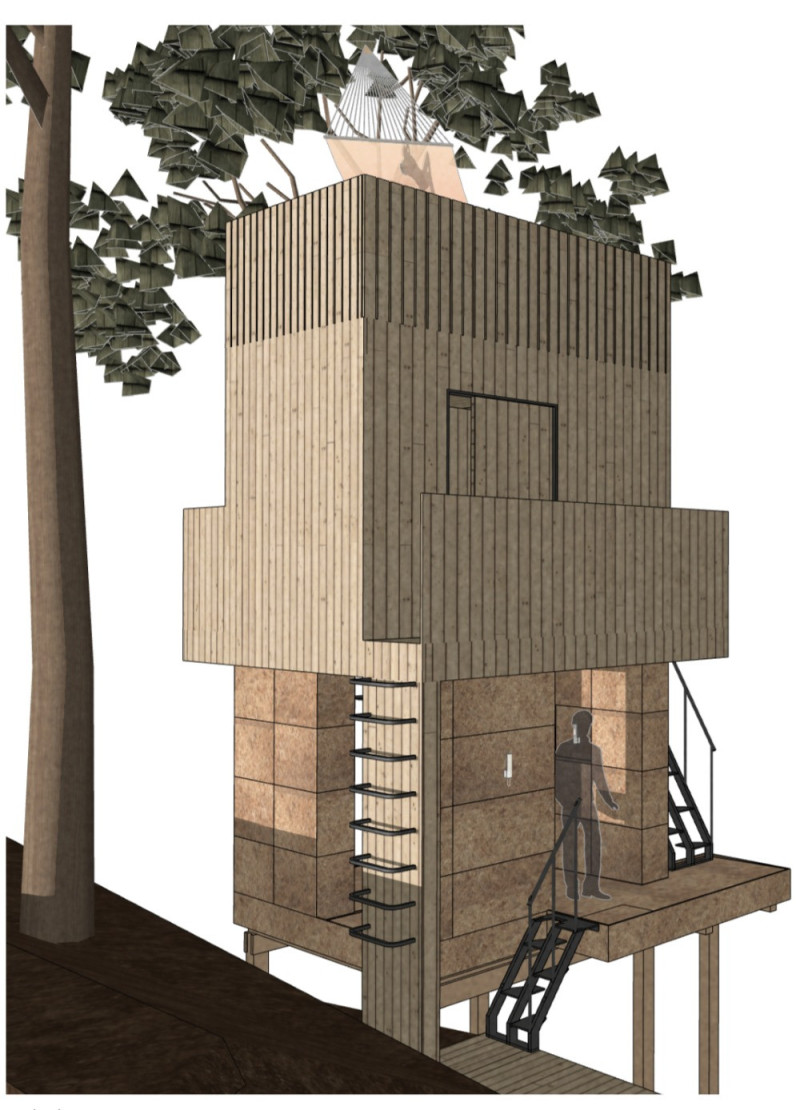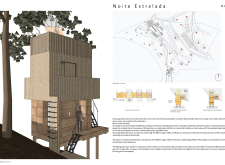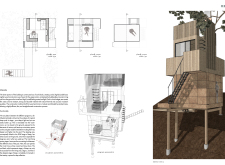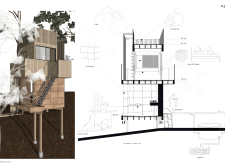5 key facts about this project
The design explores the different stages of sleep, presenting a sleeping pod that integrates with its natural surroundings. Set in a forest, the pod encourages a strong connection with nature while offering a quiet space for rest and reflection. The concept takes the biological aspects of sleep and translates them into distinct areas that influence how users interact with both their environment and themselves.
Spatial Organization
The layout of the sleeping pod mimics the stages of the sleep cycle, allowing for a smooth transition between different areas. The washroom is closest to the ground, representing the lighter phases of sleep that require easy access. Above this, the sleeping area connects directly to the earth, providing a grounding experience essential for restorative rest. This thoughtful organization underscores the relationship between the physical space and the physiological needs of the user.
Living Hub
The main living space serves as a central point that connects the various zones of the pod. It encourages social interaction and facilitates movement to the more private areas dedicated to rest and contemplation. By linking these experiences, the design promotes community while maintaining a sense of intimacy.
Elevation and Connection
The sleeping pod’s elevation above ground allows it to take up a minimal footprint, helping it blend with the surrounding forest. This height encourages users to engage actively with their environment, enhancing the feeling of peace and immersion in nature. The connection between the structure and the trees creates a harmonious balance, inviting users to experience the tranquil landscape.
Material Selection
Selected materials serve practical and ecological purposes, enhancing the user experience. The lower part of the sleeping pod uses cork blocks to provide durability and natural insulation. The upper portion is made from lighter wood, promoting a sense of airiness and strengthening the bond between the building and its natural context. This careful choice of materials addresses sustainability and improves the tactile interaction between users and their environment.
The roof deck, positioned high among the treetops, provides a quiet area for reflection. This space emphasizes the link between the inhabitants of the pod and the surrounding natural world. The design captures the essence of restful sleep, encouraging a deeper engagement with nature and personal well-being.





















































